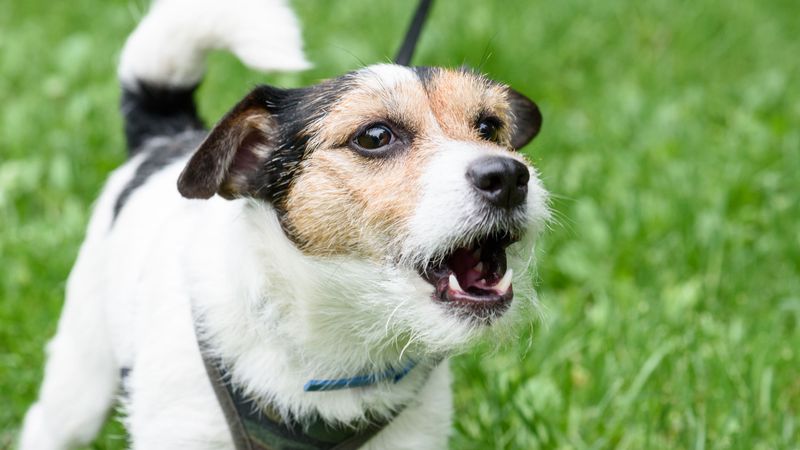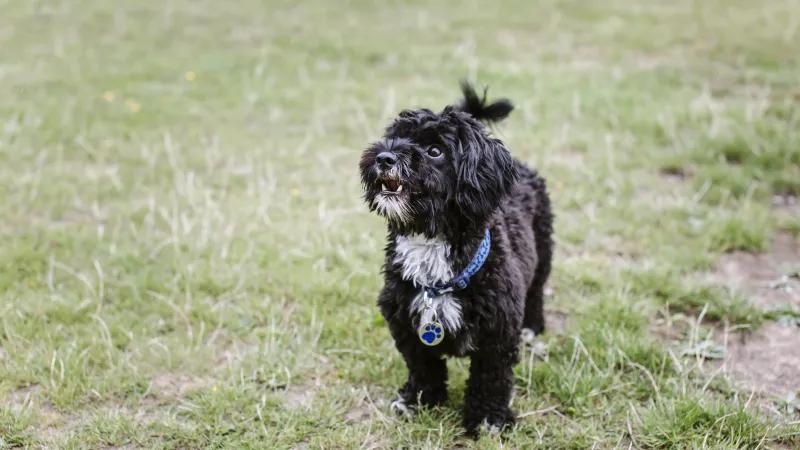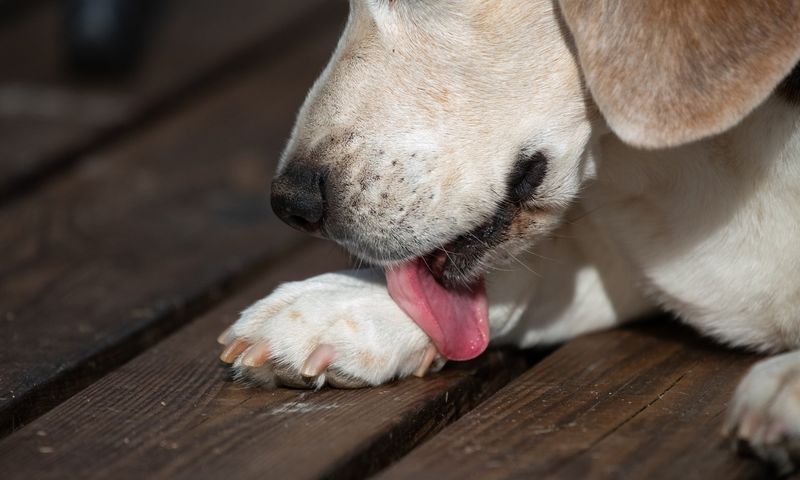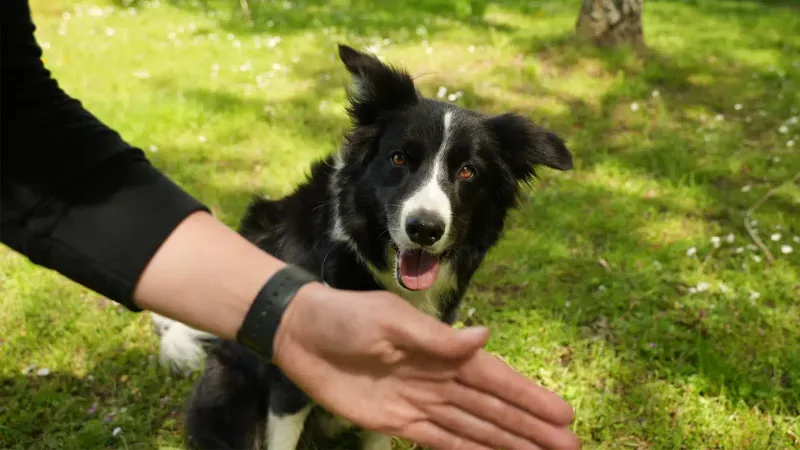Dogs, with their wagging tails and joyful barks, can elevate anyone’s mood instantly. However, just like humans, they can have their down days too. Recognizing the subtle signs of an unhappy dog is crucial for every pet owner. This guide will highlight those indicators and provide actionable insights on ensuring your furry friend is back to their cheerful self.
Loss of Appetite
When Fido ignores his favorite meal, it’s not just picky eating. A sudden loss of appetite could indicate your dog isn’t feeling his best. Dogs, much like us, may skip meals when they’re stressed or unwell. If your dog consistently avoids food, it’s time to investigate further.
Consider any recent changes in your household or routine. Sometimes, a new environment or a change in daily schedule can upset your pet’s stomach or mood.
In cases where appetite loss persists, consulting a vet can rule out underlying health issues.
Excessive Sleeping
Is your usually energetic pup snoozing all day? Dogs may sleep more when they’re unhappy or stressed. Although it’s normal for dogs to enjoy naps throughout the day, excessive sleeping can be a red flag.
Monitor your pet’s sleep patterns. If they’re not as playful as usual and prefer staying curled up, it might be time to engage them in more interactive activities.
Consulting your vet can help ensure there’s no medical issue at play.
Lack of Interest in Play
Your dog’s favorite game of fetch seems less appealing than before. A disinterest in play can be a silent plea for help. Dogs thrive on interaction and playtime, so when they show no interest, it’s concerning.
Reflect on any recent changes that could have affected your pet’s enthusiasm. Stressors such as new family members or changes in the environment might be the culprits.
Encourage play by introducing new toys or games, and ensure your dog feels loved and secure.
Unusual Aggression
Sweet-tempered Max suddenly becomes snappy? Dogs may show aggression when they’re unhappy or in pain. Such behavior changes can be alarming, especially if your dog is normally friendly.
Consider any recent changes or stressors in their environment that might have sparked this behavior. Addressing these can help soothe their temperament.
It’s important to consult with a veterinarian or a professional trainer if the aggression persists, to ensure the safety of all involved.
Excessive Barking or Whining
When barking becomes a constant tune, it could signal distress. Dogs communicate through barking, so when it’s excessive, they’re probably trying to tell you something.
Evaluate their environment for any changes that might be causing anxiety. Sometimes, unfamiliar noises or a lack of daily walks can lead to vocal outbursts.
Providing comfort and a stable routine can ease their anxiety, turning the endless barking into contented silence.
Hiding or Withdrawal
Dogs are social creatures, so when they steer clear of their family, there’s a concern. A dog that hides or withdraws might be feeling overwhelmed or insecure.
Try to identify any recent changes in the household that could have triggered this behavior. Creating a safe and comforting space can encourage your pet to rejoin the family circle.
If withdrawal continues, a consultation with a vet can shed light on any underlying health issues.
Obsessive Licking or Grooming
When Bella obsessively grooms, it’s more than just cleanliness. Dogs often lick excessively when they’re stressed or anxious. This repetitive behavior can lead to skin irritations or infections.
Consider recent changes in their environment or routine that might have triggered this stress response. Alleviating these stressors can often reduce the behavior.
If the licking escalates, professional guidance can help pinpoint the root cause and offer solutions.
Changes in Body Language
A dog’s body speaks volumes even when their bark doesn’t. Changes like cowering, tail tucking, or ear flattening can indicate unease. Dogs express their emotions through posture, so attentive observation is key.
Identifying what prompts these shifts in body language can help. Sometimes, it might be a specific environment or person causing distress.
Reassuring your pet with gentle companionship can aid in alleviating their discomfort.
Destructive Behavior
Fido’s chewed up shoes might not just be mischief. Destructive behavior can be your dog’s way of expressing unhappiness or boredom. Dogs often resort to chewing or digging when they lack stimulation or feel anxious.
Identify any recent changes that might be causing this behavior and ensure your dog is getting enough mental and physical exercise.
Providing engaging toys and dedicating time for play can redirect this energy positively.
Ignoring Commands or Training
When Rover no longer listens, it’s more than disobedience. Ignoring commands can be a sign of stress or distraction. Dogs may shut down if they’re overwhelmed or if previous training sessions were overly intense.
Analyze recent changes in routine or environment as potential stressors. Ensure that training remains positive and rewarding.
Consult a professional trainer if the behavior persists, to reinforce positive behavior gently.
Frequent Yawning or Lip Licking
Spot’s yawns aren’t just about sleepiness. Frequent yawning or lip licking can be subtle stress indicators in dogs. These behaviors often occur in unfamiliar or stressful situations, signaling discomfort.
Observe the context in which these behaviors occur. Sometimes, they might relate to an overwhelming environment or new experiences.
Providing a calming presence and a quiet space can help ease their tension.
Pacing or Restlessness
If your dog can’t seem to settle, pacing can suggest anxiety or discomfort. Dogs may pace when they’re unable to relax or when something’s amiss in their environment.
Evaluate any surroundings or changes that might trigger this restlessness. Sometimes, background noises or changes in routine can unsettle them.
Offering reassurance and a peaceful space can help them find their calm again.
Shivering or Trembling
When Bella shivers, it’s not always because she’s cold. Dogs may tremble out of fear or anxiety, even in a warm environment. Observing the circumstances can provide clues to their discomfort.
Assess if there are any specific triggers, like loud noises or unfamiliar visitors, causing this reaction.
Creating a safe and comforting environment can help reassure your pet, reducing the trembling.
Repetitive Behavior
Rover’s endless circles might seem playful, but repetitive behaviors can indicate stress. Dogs might engage in these actions when they’re anxious or not adequately stimulated.
Identifying any recent changes or stressors is crucial. Ensuring they have ample exercise and mental challenges can often curb this behavior.
If it continues, seeking professional advice can offer more tailored solutions.
Loss of Interest in Surroundings
Has Buddy lost his usual curiosity? A lack of interest in surroundings can be a sign of unhappiness or depression. Dogs, known for their inquisitive nature, might lose interest when they’re feeling down.
Consider any recent lifestyle changes that could be affecting their mood. Ensuring engaging activities and companionship can reignite their sense of wonder.
Consulting with a vet can help rule out any underlying health concerns.
Seeking Excessive Comfort
When Spot can’t leave your side, it might be seeking comfort due to stress or insecurity. Dogs often cling when they’re feeling anxious or need reassurance.
Reflect on any changes in your household that might have caused this behavior. Offering additional love and stability can help ease their anxiety.
If excessive clinging persists, professional guidance can provide strategies for fostering independence.
Changes in Vocalization
Your dog’s newfound voice might not just be a phase. Changes in vocalizations, like howling or whimpering, can signal distress or discomfort. Dogs use sound to communicate their emotional state.
Investigate any new stressors or changes in their environment. Sometimes, a lack of attention or discomfort can lead to these vocal outbursts.
Providing a comforting routine and attention can help restore peace and quiet.

















